How CBT Killed the Soul of Psychotherapy: The Rosenhan Experiment: A Prophecy Fulfilled
 In 1973, a psychiatric hospital received an unusual visitor. A man walked up to admissions and said simply, “I hear voices.” When the psychiatrist asked what they said, he replied: “Empty, hollow, thud.” He was immediately admitted, diagnosed with schizophrenia, and kept for weeks. But here’s the thing—he wasn’t insane. He was a psychologist participating in David Rosenhan’s groundbreaking experiment to prove that psychiatric diagnosis was fundamentally flawed.
In 1973, a psychiatric hospital received an unusual visitor. A man walked up to admissions and said simply, “I hear voices.” When the psychiatrist asked what they said, he replied: “Empty, hollow, thud.” He was immediately admitted, diagnosed with schizophrenia, and kept for weeks. But here’s the thing—he wasn’t insane. He was a psychologist participating in David Rosenhan’s groundbreaking experiment to prove that psychiatric diagnosis was fundamentally flawed.
Eight pseudo-patients, all sane, were admitted to psychiatric hospitals across the country, all labeled insane for hearing just three words: “empty, hollow, thud.” Those three words would become the perfect description of what American psychology was about to become—a hollow shell of its former depth, producing empty interventions that land with the thud of mechanistic thinking.
https://www.youtube.com/watch?v=EZBxxsD72Zg
The Computer Revolution and the Mind-as-Machine Metaphor
The 1960s brought the computer revolution, and with it a seductive new metaphor that would reshape psychology forever. Before computers, humans understood God through their dominant technologies: when we invented architecture, God became an architect; when we invented clocks, He became a watchmaker. Now, with computers, the mind itself became a computer—something that could not only be programmed but could program itself.
Suddenly consciousness wasn’t mysterious anymore. It was just information processing with inputs and outputs, programs and bugs, hardware and software. This mechanistic view would provide the perfect foundation for what was coming: Cognitive Behavioral Therapy, a therapeutic approach that treated the mind like Microsoft Windows, complete with patches for psychological “bugs.”
Aaron Beck and the Birth of CBT
Enter Aaron Beck, a disillusioned Freudian who looked at the messy, mystical world of psychoanalysis—all that unconscious material, dreams, symbols, expensive long-term therapy—and asked a revolutionary question: “What if depression isn’t about repressed trauma or archetypal struggles? What if it’s just bad code?”
CBT was born from this computational metaphor. Your thoughts became programs, your depression became a bug, and therapy became a debugging process. Track negative thoughts, rate them 1 through 10, replace with positive thoughts, and reboot. Like Microsoft Windows, CBT works about as well.
Beck developed a streamlined approach targeting “cognitive distortions.” Catch yourself thinking “I’m a total loser” and replace it with “I have talents and abilities.” Thought by thought, belief by belief, you debug your operating system without any of the messy subjective interpretation of Freudian analysis, the mysticism of Jung, or the relational depth that Carl Rogers or Virginia Satir had pioneered.
The Seductive Appeal of Measurement
CBT offered something irresistible to academic medicine: measurability. Reducing everything to numbers became incredibly easy to study because research, especially “objective” research, doesn’t like the messiness of qualitative techniques. It prefers things that can be categorized as right or wrong, true or false.
Study after study showed CBT’s effectiveness, just as antidepressants showed effectiveness. Academic medicine combined them: six to twelve sessions of CBT, and if that doesn’t work, medication becomes your last stop—and all that insurance will pay for. It was genius: clean, testable, measurable. It was also complete horseshit, but it was measurable horseshit, and that’s all that mattered.
One professor gave a student a CBT study where someone was measuring marijuana consumption. The person went from smoking ten joints to one joint—but the joint had just gotten bigger. This perfectly captures how evidence-based metrics can be gamed while missing the actual problem entirely.
Tanya Luhrmann’s Discovery: The Hidden Civil War
Anthropologist Tanya Luhrmann actually bothered to look at what was happening in American psychiatry, documenting something nobody wanted to admit: the field had split into two armed camps that hated each other.
On one side were psychoanalysts talking about dreams, transference, and the unconscious, seeing patients as whole human beings with stories, contexts, and meanings. On the other side were the “biomedical boys” pushing the biomedical model—true believers in remaking mental health where the brain was a meat computer, mental illness was chemical imbalance, and 15-minute med checks were sufficient for lifelong pharmaceutical prescriptions.
Luhrmann spent years embedded in psychiatric training programs, watching this civil war play out. Psychodynamic residents would sneer at the “pill pushers.” Biological psychiatrists would mock the “fuzzy-minded analysts” for their willingness to sit with gray areas and subjectivity.
The Shocking Truth About CBT Effectiveness
Here’s Luhrmann’s most devastating discovery: when she studied “pure CBT” therapists who claimed to treat everyone the same way, something fascinating emerged. These therapists were unconsciously doing depth work—building relationships, holding space, using intuition. All the supposedly “unscientific” elements were the actual mechanisms of action that worked.
Why? Because you can’t extract a hundred years of psychodynamic wisdom from the cultural water supply. These therapists had absorbed Freud, Jung, and Rogers through osmosis. They thought they were doing CBT, but watch them work—they were doing perennial philosophy in CBT drag.
The old-timers trained in psychoanalytic institutes, even if they’d converted to CBT for insurance reasons, still had the moves. They could read the room, feel into silence, use their mirror neurons, track unconscious dynamics between therapist and client. They understood projections even while speaking CBT language, calling it “cognitive restructuring” to get paid.
The Horror of the Next Generation
But here’s where the story becomes truly horrifying: by the 1990s, the old-timers were retiring. The new generation was being trained in pure CBT with no psychodynamic theory—they didn’t even remember it, and many had never heard of it.
There was no depth psychology, no understanding of transference, projection, or the unconscious—just worksheets and thought records. These therapists didn’t even know what they didn’t know. They’d never heard of object relations. They thought parts work was “woo-woo.” They believed the mind really was a computer, even though their own political and religious beliefs clearly demonstrated otherwise.
Their therapy became exactly what Rosenhan’s pseudo-patients heard: empty, hollow, thud.
The Replication Crisis Reveals the Truth
The replication crisis would later prove what everyone already knew: most of what made therapy work couldn’t be measured. The studies showing CBT’s effectiveness were accidentally measuring the psychodynamic skills that therapists didn’t know they were using or couldn’t admit they were using.
When you stripped those skills out, when you trained a generation of therapists who really did only CBT—just worksheets, just thought challenging, just behavioral activation—the effectiveness plummeted. It turns out you can’t debug a soul, you can’t worksheet your way out of existential terror, and you can’t thought-record yourself into wholeness.
America’s Unconscious Bargain
But why did America want therapy to become empty? What did they get out of this deal? The Boomers had made a deal with the devil. They’d inherited a world shaped by their parents’ war trauma, nuclear family isolation, white flight, suburbanization, women entering the workforce with no childcare, and communities destroyed for highways—real systemic issues.
The kind of analysis that might lead to uncomfortable questions like “Maybe capitalism is making us crazy” or “Maybe the nuclear family is a historic anomaly that becomes insane when injected with the profit motive” was exactly what Boomers didn’t want. They wanted individual solutions and the belief that if you just fixed your thinking, you’d be fine. Pull yourself up by your bootstraps, never mind that you’re working 60 hours a week with no community support while your kids are raised by television.
CBT was perfect for this: Your depression isn’t about living in an insane society—it’s a cognitive distortion. Your anxiety isn’t about precarious employment and no healthcare—you just need to challenge those negative thoughts. It put the onus of control back on the individual when our real environmental and emotional lives involve reciprocal forces between objective and subjective worlds.
The Game Theory Connection
As Adam Curtis documented, this mechanistic view paralleled developments in economics and military strategy. John Nash created game theory—a mathematical model where everything is rational and every actor maximizes self-interest through rational action. The Cold War military loved it, as did economists who believed everyone was a rational actor.
Except these same economists would go to dinner parties and talk about their wives, barbers, church members, and office colleagues who couldn’t manage money and were completely irrational. The theories they developed assumed everyone was a rational actor 100% of the time, ignoring all other forces that move society.
When Nash’s game theory was tested on actual humans, it broke down every time. In the prisoner’s dilemma variations, people didn’t act according to Nash’s logic. They trusted when they shouldn’t, gave away wealth, lied, cooperated, or acted from spite or intuition. In other words, they acted human.
Even under lab conditions with real stakes, Nash’s elegant predictions failed to describe actual behavior. That failure wasn’t a fluke—it was a flashing red light that the human mind is not a machine built for logic. We’re not spreadsheets or algorithms; we’re narrative-making, grief-haunted, hope-driven animals.
The Rise of the DSM-3 and Diagnostic Reductionism
Rosenhan’s study and the broader anti-psychiatry movement contributed to a growing crisis of confidence in psychiatric diagnosis. By 1980, the DSM-3 arrived—nearly 500 pages of checklists representing a radical response to questions about psychiatric validity.
This was the answer to people like R.D. Laing who said things like “You’re not crazy—feeling crazy is a normal response to inhabiting a crazy world. The world should change to meet your mental health, not vice versa.” The DSM-3 walked back all the promises that earlier versions made about never being used for biomedical diagnosis or insurance billing. It became something very different: just symptoms you could count, mental illness as error codes, checklists claiming to describe consciousness even when they didn’t.
We didn’t care if diagnoses were right—we cared if they were reliable. We didn’t care if they were helpful—we needed something consistent. Insurance companies loved it, researchers loved it. The only people who didn’t love it were those actually suffering.
The Secret Resistance
Even as CBT conquered everything, Luhrmann noticed something nobody wanted to discuss: the good therapists kept doing depth work. They just had to lie about it, maybe even to themselves.
Watch a skilled CBT therapist work—they’re tracking the relationship, noticing what’s unsaid, aware of projections, feeling into emotional fields, holding paradox, sitting with mystery. Often while signing insurance contracts stating they won’t do any of these “unscientific” things. They’ll write “challenged cognitive distortion regarding worthlessness” in their notes, but what actually happened was a moment of profound human connection where someone felt seen for the first time in their life.
Research on mechanisms of action backs this up: when you analyze what creates change in therapy, it’s the relationship, not the technique. The therapist’s capacity to hold complexity, not their theoretical orientation. The client feeling understood, not having their thoughts corrected intellectually. The very things CBT claims don’t matter are the only things that actually matter in the room.
The Satanic Panic: CBT’s Shadow Returns
Meanwhile, all that banished shadow material—the trauma, unconscious content, systemic suffering—where did it go when we pretended it didn’t exist? As Jung warned, “If you ignore the shadow, it returns as monsters.”
Enter the Satanic Panic—two strange groups converging around child abuse concerns. Second-wave feminists were doing early somatic psychotherapy, finally naming child abuse (something Freud had failed to do), believing children and breaking generational silence about patriarchy and systemic abuse by those who appeared good but did horrible things.
The second group was conservative Catholics reeling from Vatican II—Latin mass was gone, they were desperate to prove Satan was real, angry that their supposedly unchanging conservative culture had changed. But they agreed on one thing: children were being hurt.
Lawrence Pazder, a psychiatrist sleeping with his patient while married (later divorcing to marry the patient), claimed to recover memories of satanic ritual abuse through hypnotic techniques. These “memories” involved hundreds of Satanists in underground tunnels, babies sacrificed nightly under major cities throughout North America, with the Virgin Mary occasionally intervening spiritually.
This should have been laughed out of the room, but instead Pazder became the expert, training police, consulting on abuse cases, becoming a household name. A literal Satan was easier to accept than “we built a society that runs on trauma and then made trauma illegal to discuss through the psychology that was supposed to analyze why we are sick.”
The Cultural Diagnosis: Collective Borderline Personality
If we gave American culture a DSM screener for borderline personality disorder, what would we find?
- Fear of abandonment: If you’re not productive, you’re worthless
- Unstable relationships: 50% divorce rate and community death
- Identity disturbance: Who are we beyond our brands, jobs, income?
- Impulsivity: Credit card debt, news cycles where people can’t remember what happened two hours ago
- Projection: Onto political figures like Marvel superheroes or gods
- Suicidal behaviors: Ignoring risks like nuclear war
- Emotional instability: Road rage, Twitter mobs, cancel culture
- Chronic emptiness: Mental health diagnoses at sky-high rates
- Inappropriate anger: People who can’t watch news without blood pressure spiking
- Dissociation: Screens everywhere, rarely participating in one conversation
Borderline personality disorder happens when someone can’t regulate emotions because they never learned how, can’t form stable identity because they were never properly mirrored, and split the world into all-good and all-bad because they can’t hold complexity.
We created a culture that can’t tolerate ambiguity, process grief, hold paradox, see metaphor, feel without consuming, believe something is real without an objective metric, think without computing, or exist without producing. We gave ourselves cultural BPD and acted surprised when everyone started cutting themselves with credit cards and filling the void with opiates.
The False Memory Wars and the Death of Depth
As the satanic panic peaked, the backlash began. The False Memory Syndrome Foundation formed, accused parents fought back, families were torn apart by recovered memories, therapists were sued for millions. Real survivors got caught in the crossfire, their actual trauma delegitimized by hysteria over false memories.
The baby of legitimate trauma therapy was thrown out with the satanic bathwater. Anyone talking about repressed memories became suspect. Body-contained emotion was “Satan’s stuff.” Dissociation was made up. Systemic abuse became conspiracy theory. The unconscious itself was unscientific.
Geraldo Rivera went on TV in 1995 declaring: “We’ve found no proof of satanic ritual abuse anywhere in the country. As a firm believer in the ‘Believe the Children’ movement, that movement is now dead.” But what really died wasn’t just belief in satanic cults—it was trust in memory, faith in good therapy, belief in the unconscious, understanding of trauma, and any hope of depth work.
The Training Crisis: Surgery Without Anatomy
By the mid-1990s, CBT had conquered everything. It’s the only therapy insurance covers, the only approach getting research funding, the only one speaking research language, and what they teach in graduate schools. It’s “evidence-based” because we only measure what it measures.
The new generation was being trained in therapy stripped of its own history, learning “evidence-based practices” without understanding that the evidence was based on therapists who knew things they didn’t know. It’s like teaching surgery by showing someone how to hold a scalpel without explaining anatomy—they can go through motions but can’t recognize what they’re cutting.
Meanwhile, in community clinics across the country, 72-year-old therapists trained in the 1970s saw their last patients, billing insurance for CBT but doing something else entirely in the room—something that couldn’t be manualized, measured, or taught in six weeks. They listened with their whole bodies, felt the unsaid hovering in the air, held the unbearable until it became bearable.
They were doing “the thing that has no name anymore because we’ve forgotten the names.” As one told Luhrmann: “I teach CBT techniques, but I’m really teaching them to pay attention. Once they learn to pay attention, they discover everything else on their own.”
But what happens when there’s no one left who knows how to pay attention?
The Current Crisis: Empty, Hollow, Thud
Here’s a common experience described by people who’ve been in CBT before coming to practices that do depth work:
Client: “I think trauma is stored in my body. I notice my body does this when—” Therapist: “That’s just anxiety. Let’s work on thought patterns. Point to the emotion on the wheel. Rate your distress 1 to 10.” Client: “But I can feel it in my throat, and—” Therapist: “Those are cognitive distortions. Here’s a worksheet. Point to the emotion on the wheel.” Client: “I notice my throat does this thing like I’m trying to stop—” Therapist: “That’s victim mindset. You’re making excuses instead of solutions. Do you want tomorrow to be different?”
They cut the client off, or worse—they listen and don’t believe them, and the patient picks up on that energy. These young therapists genuinely believe they’re helping. They’re doing exactly what they were trained to do. They just have no idea their training is missing 90% of what makes therapy work.
The client leaves with worksheets, feeling unheard, starting to think that what wasn’t heard must be unimportant. They’ll try another therapist, then another, looking for something they can’t name because the language for it has been deleted.
The Perennial Philosophy Persists
But here’s the thing: even with systematic dismantling, you can’t kill something like perennial philosophy because it becomes its own kind of evidence-based practice. The fact that these timeless ideas existed before the ’60s, ’70s, and ’80s and continued resurging across cultures, across time, across people who didn’t know each other—that itself is evidence.
The soul will remind you that it exists. Even with these incentive structures, people are doing wonderful work and making discoveries. The resistance blooms in the cracks of the machine.
We solved our problem of consciousness by pretending it didn’t exist. We solved the problem of trauma by making it unspeakable. We solved the problem of depth by staying on the surface. And we solved the problem of the soul by declaring it dead.
But you can’t debug a soul. You can’t optimize your way out of despair. You can’t game theory your way into love. And you can’t put the value of trust on a spreadsheet.
The most rational era in history became the most irrational. The most scientific approach created the most unscientific outcomes. The culture that banished metaphor took everything literally. The society that deleted feelings became entirely driven by them.
Those three words from Rosenhan’s experiment became prophecy: empty, hollow, thud. But in the community clinic across town, the 72-year-old therapist continues doing the work that has no name, knowing that her knowledge will die with her, hoping that somewhere, someone is still learning to pay attention.
The question remains: when there’s no one left who remembers how to see the soul, what then?
Bibliography
- Beck, Aaron T. Cognitive Therapy and the Emotional Disorders. International Universities Press, 1976.
- Curtis, Adam. All Watched Over by Machines of Loving Grace. BBC Documentary, 2011.
- Luhrmann, Tanya M. Of Two Minds: An Anthropologist Looks at American Psychiatry. Vintage Books, 2001.
- Nash, John. “Equilibrium Points in N-Person Games.” PNAS, 1950.
- Rosenhan, David L. “On Being Sane in Insane Places.” Science, 1973.
- American Psychiatric Association. Diagnostic and Statistical Manual of Mental Disorders, 3rd ed. APA, 1980.
- Freud, Sigmund. The Interpretation of Dreams. Basic Books, 1900/2010.
- Jung, Carl Gustav. The Archetypes and the Collective Unconscious. Princeton University Press, 1969.
- Rogers, Carl. On Becoming a Person. Houghton Mifflin, 1961.
- Satir, Virginia. Conjoint Family Therapy. Science and Behavior Books, 1964.
- Pazder, Lawrence and Michelle Smith. Michelle Remembers. Congdon & Lattes, 1980.
- van der Kolk, Bessel. The Body Keeps the Score. Viking, 2014.
- Bion, Wilfred. Learning from Experience. Karnac, 1962.
- Laing, R.D. The Divided Self. Tavistock, 1960.
- Wampold, Bruce E. The Great Psychotherapy Debate. Lawrence Erlbaum, 2001.

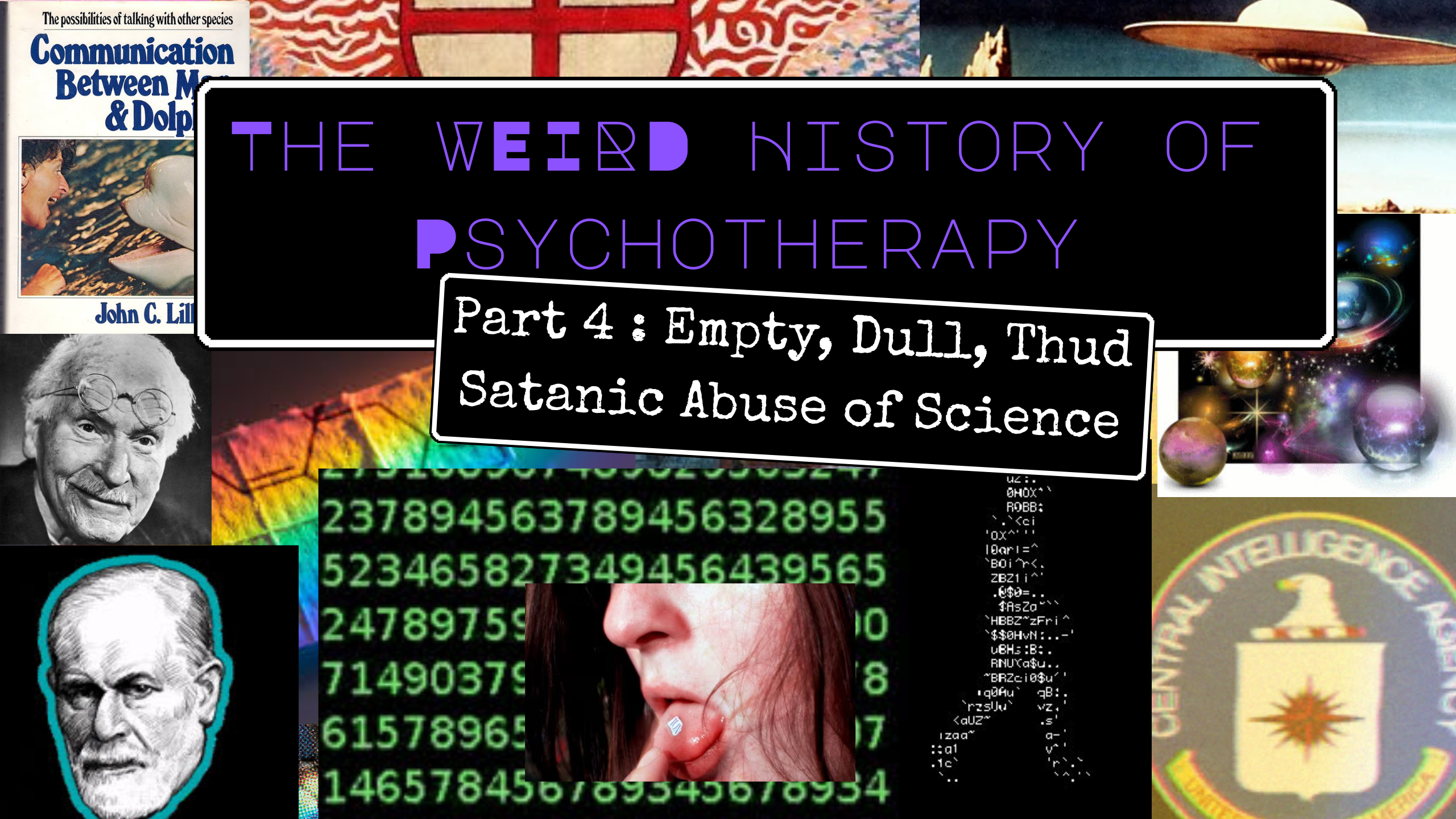
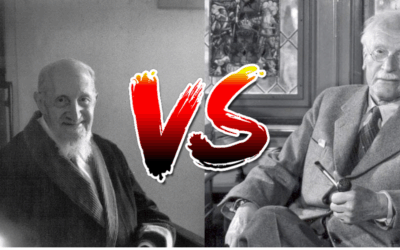



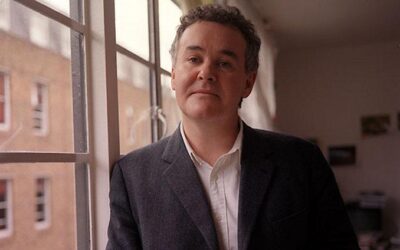
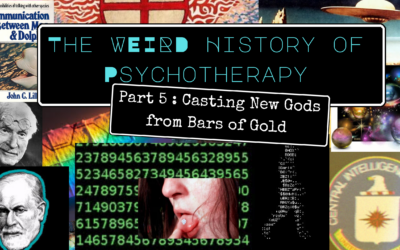














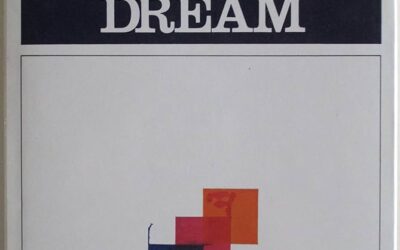


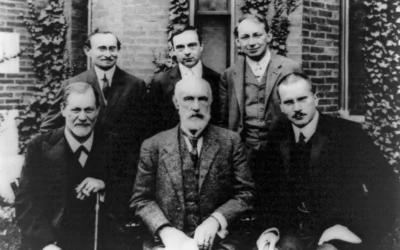
0 Comments